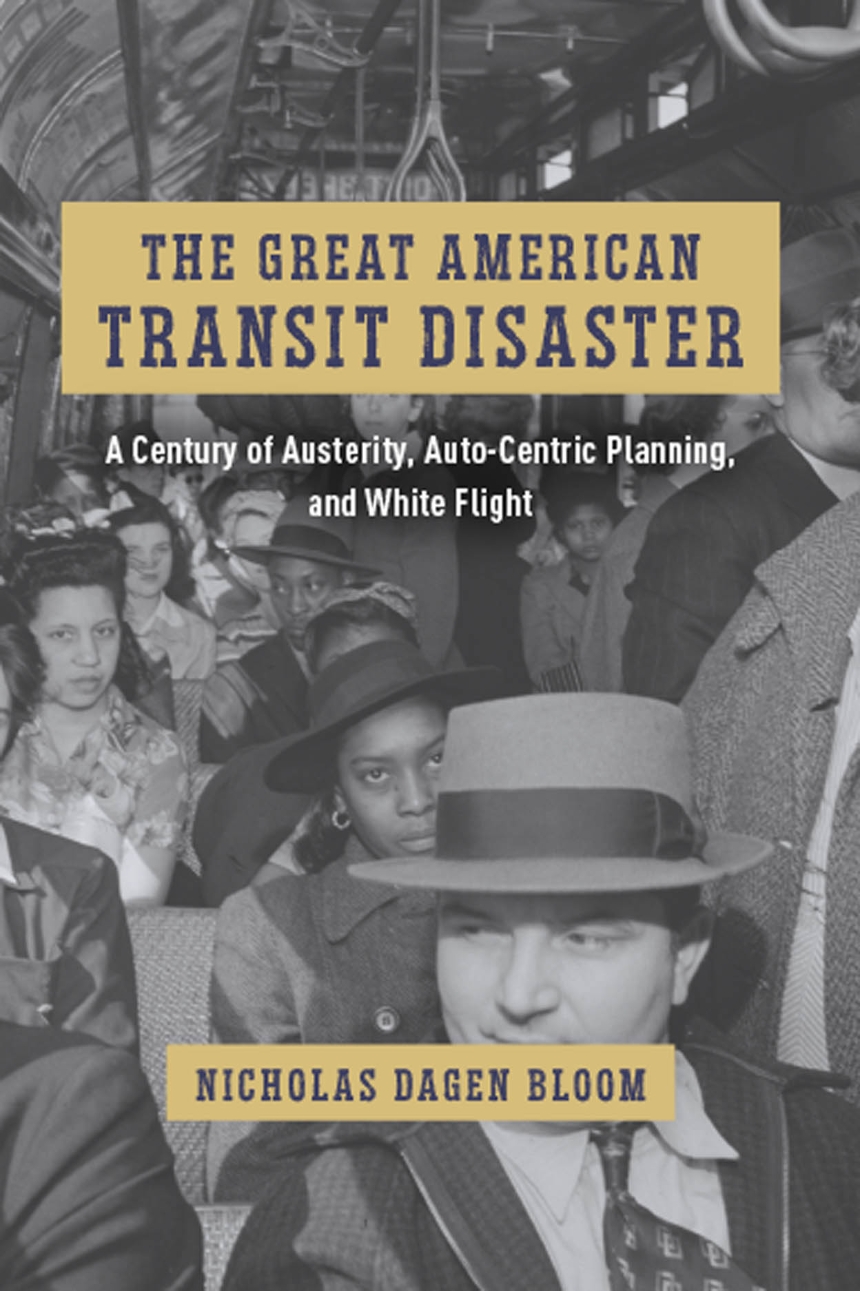The Great American Transit Disaster
A Century of Austerity, Auto-Centric Planning, and White Flight
9780226836621
9780226824406
9780226824413
9780226834610
The Great American Transit Disaster
A Century of Austerity, Auto-Centric Planning, and White Flight
A potent re-examination of America’s history of public disinvestment in mass transit.
Many a scholar and policy analyst has lamented American dependence on cars and the corresponding lack of federal investment in public transportation throughout the latter decades of the twentieth century. But as Nicholas Dagen Bloom shows in The Great American Transit Disaster, our transit networks are so bad for a very simple reason: we wanted it this way.
Focusing on Baltimore, Atlanta, Chicago, Detroit, Boston, and San Francisco, Bloom provides overwhelming evidence that transit disinvestment was a choice rather than destiny. He pinpoints three major factors that led to the decline of public transit in the United States: municipal austerity policies that denied most transit agencies the funding to sustain high-quality service; the encouragement of auto-centric planning; and white flight from dense city centers to far-flung suburbs. As Bloom makes clear, these local public policy decisions were not the product of a nefarious auto industry or any other grand conspiracy—all were widely supported by voters, who effectively shut out options for transit-friendly futures. With this book, Bloom seeks not only to dispel our accepted transit myths but hopefully to lay new tracks for today’s conversations about public transportation funding.
Many a scholar and policy analyst has lamented American dependence on cars and the corresponding lack of federal investment in public transportation throughout the latter decades of the twentieth century. But as Nicholas Dagen Bloom shows in The Great American Transit Disaster, our transit networks are so bad for a very simple reason: we wanted it this way.
Focusing on Baltimore, Atlanta, Chicago, Detroit, Boston, and San Francisco, Bloom provides overwhelming evidence that transit disinvestment was a choice rather than destiny. He pinpoints three major factors that led to the decline of public transit in the United States: municipal austerity policies that denied most transit agencies the funding to sustain high-quality service; the encouragement of auto-centric planning; and white flight from dense city centers to far-flung suburbs. As Bloom makes clear, these local public policy decisions were not the product of a nefarious auto industry or any other grand conspiracy—all were widely supported by voters, who effectively shut out options for transit-friendly futures. With this book, Bloom seeks not only to dispel our accepted transit myths but hopefully to lay new tracks for today’s conversations about public transportation funding.
368 pages | 39 halftones | 6 x 9 | © 2023
Historical Studies of Urban America
History: American History, Urban History
Transportation: General
Reviews
Table of Contents
Introduction
Pre–World War II
Part 1 Urban Transit Rise and Decline
Chapter 1 Baltimore: City Leaders versus Private Transit
Chapter 2 Chicago: A Limited Public Commitment to Transit
Chapter 3 Boston: Reverse Engineering Public Transit
The Postwar Transit Disaster, 1945 to 1980
Part 2 Unsubsidized Private Transit
Chapter 4 Baltimore: Urban Crisis, Race, and Private Transit Collapse
Chapter 5 Atlanta: Race, Transit, and the Sunbelt Boom
Part 3 “Pay as You Go” Public Transit
Chapters 6 Chicago: The Failure of “Pay as You Go” Public Transit
Chapter 7 Detroit: Racism and America’s Worst Big-City Transit
Part 4: Public Transit That Worked Better
Chapter 8 Boston Pioneers Public Regional Transit
Chapter 9 San Francisco: Deeply Subsidized Public Transit
Conclusion Beyond Transit Fatalism
Acknowledgments
Notes
Index
Pre–World War II
Part 1 Urban Transit Rise and Decline
Chapter 1 Baltimore: City Leaders versus Private Transit
Chapter 2 Chicago: A Limited Public Commitment to Transit
Chapter 3 Boston: Reverse Engineering Public Transit
The Postwar Transit Disaster, 1945 to 1980
Part 2 Unsubsidized Private Transit
Chapter 4 Baltimore: Urban Crisis, Race, and Private Transit Collapse
Chapter 5 Atlanta: Race, Transit, and the Sunbelt Boom
Part 3 “Pay as You Go” Public Transit
Chapters 6 Chicago: The Failure of “Pay as You Go” Public Transit
Chapter 7 Detroit: Racism and America’s Worst Big-City Transit
Part 4: Public Transit That Worked Better
Chapter 8 Boston Pioneers Public Regional Transit
Chapter 9 San Francisco: Deeply Subsidized Public Transit
Conclusion Beyond Transit Fatalism
Acknowledgments
Notes
Index
